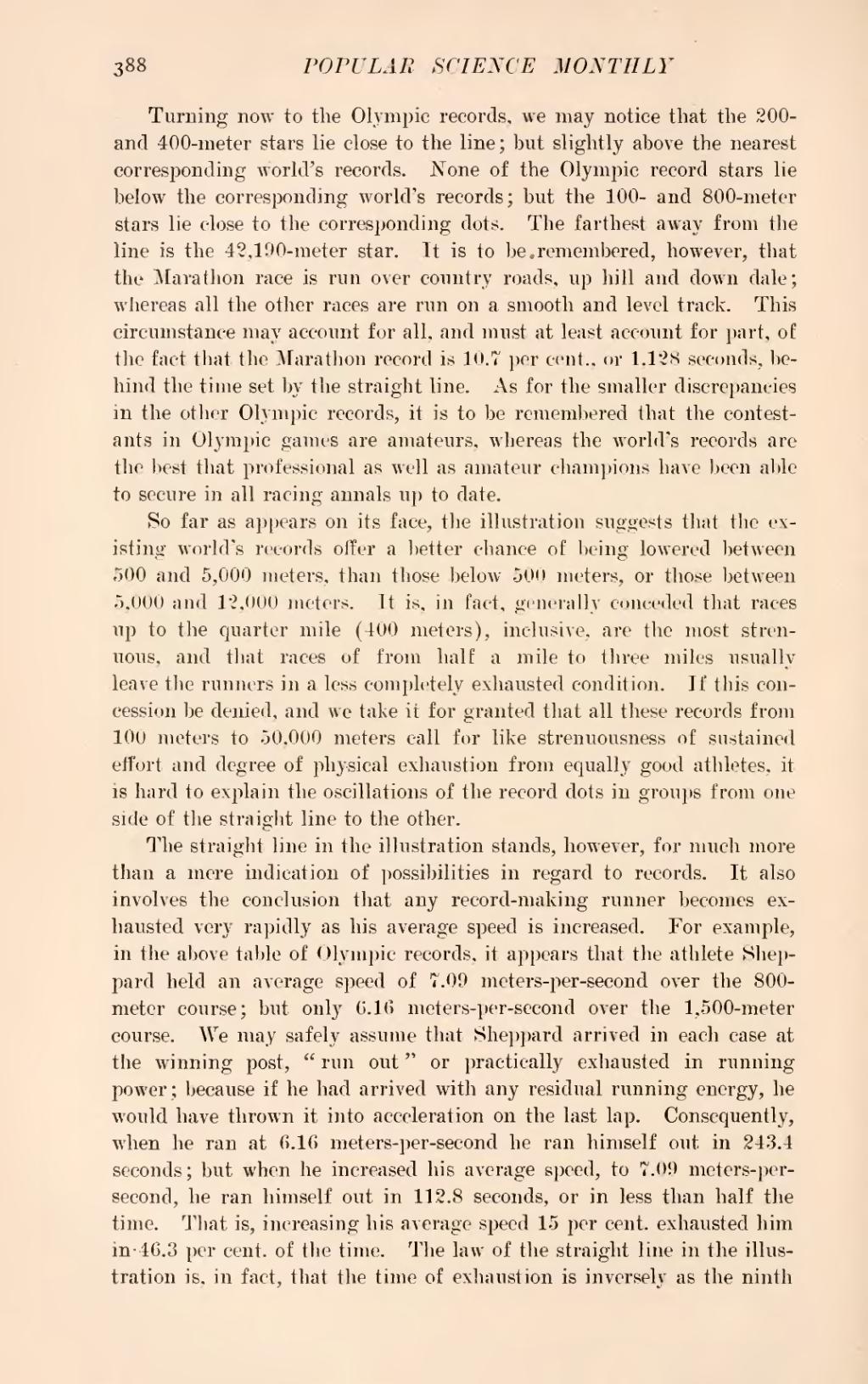Turning now to the Olympic records, we may notice that the 200and 400-meter stars lie close to the line; but slightly above the nearest corresponding world's records. None of the Olympic record stars lie below the corresponding world's records; but the 100-and 800-meter stars lie close to the corresponding dots. The farthest away from the line is the 42,190-meter star. It is to be. remembered, however, that the Marathon race is run over country roads, up hill and down dale; whereas all the other races are run on a smooth and level track. This circumstance may account for all, and must at least account for part, of the fact that the Marathon record is 10.7 per cent., or 1,128 seconds, behind the time set by the straight line. As for the smaller discrepancies in the other Olympic records, it is to be remembered that the contestants in Olympic games are amateurs, whereas the world's records are the best that professional as well as amateur champions have been able to secure in all racing annals up to date.
So far as appears on its face, the illustration suggests that the existing world's records offer a better chance of being lowered between 500 and 5,000 meters, than those below 500 meters, or those between 5,000 and 12,000 meters. It is, in fact, generally conceded that races up to the quarter mile (400 meters), inclusive, are the most strenuous, and that races of from half a mile to three miles usually leave the runners in a less completely exhausted condition. If this concession be denied, and we take it for granted that all these records from 100 meters to 50,000 meters call for like strenuousness of sustained effort and degree of physical exhaustion from equally good athletes, it is hard to explain the oscillations of the record dots in groups from one side of the straight line to the other.
The straight line in the illustration stands, however, for much more than a mere indication of possibilities in regard to records. It also involves the conclusion that any record-making runner becomes exhausted very rapidly as his average speed is increased. For example, in the above table of Olympic records, it appears that the athlete Sheppard held an average speed of 7.09 meters-per-second over the 800meter course; but only C.16 meters-per-second over the 1,500-meter course. We may safely assume that Sheppard arrived in each case at the winning post, "run out" or practically exhausted in running power; because if he had arrived with any residual running energy, he would have thrown it into acceleration on the last lap. Consequently, when he ran at 6.16 meters-per-second he ran himself out in 243.4 seconds; but when he increased his average speed, to 7.09 meters-per-second, he ran himself out in 112.8 seconds, or in less than half the time. That is, increasing his average speed 15 per cent, exhausted him in-46.3 per cent, of the time. The law of the straight line in the illustration is, in fact, that the time of exhaustion is inversely as the ninth
